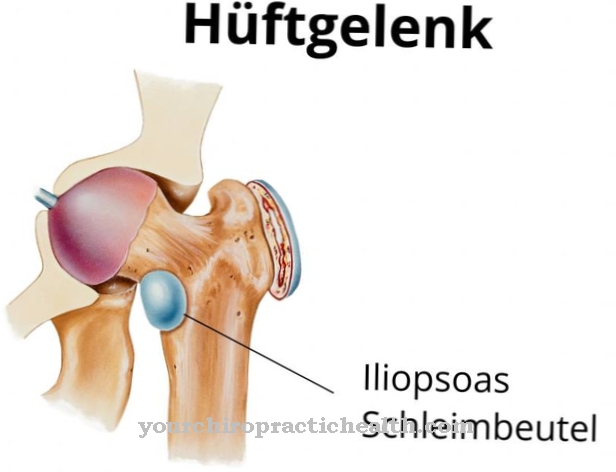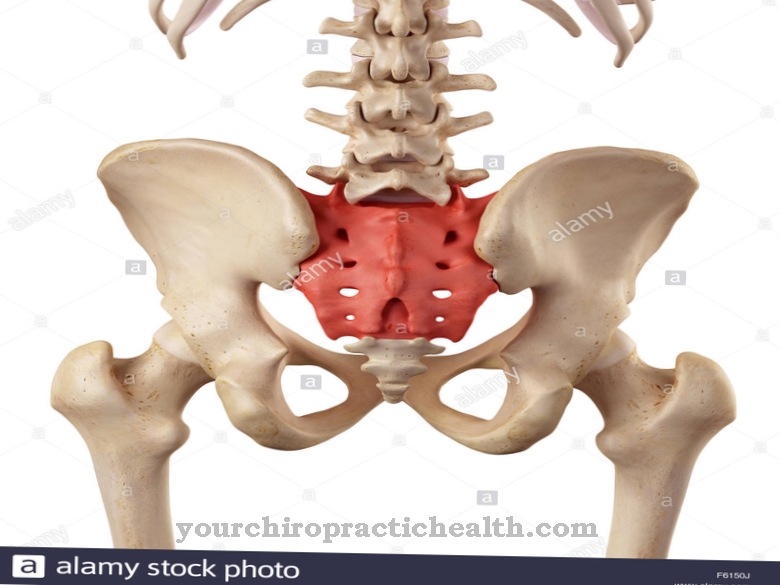in the Inheritance point or Punctum nervosum Sensitive nerve branches emerge from the neck plexus together to the surface. The anatomical region has played a role in local anesthesia before operations in the neck area since it was first described. Since the Erb point is on the posterior edge of the sternocleidomastoid muscle, it can have pathological relevance in the context of compression syndromes.
What is the inheritance point?
Wilhelm Heinrich Erb was a German neurologist who made important contributions to modern neurology. Erb is the namesake for several anatomical regions. In his honor, three points on the body are designated as hereditary points. One of them is the so-called punctum nervosum, which is an important point of reference in the topographical anatomy of the neck.
The sensitive nerve branches from the plexus cervicalis nerve plexus come together to the surface at the posterior edge of the sternocleidomastoid muscle in the lateral neck triangle. The nerves protruding from the depths of the Erb point are known as the minor occipitalis nerve, the auricularis magnus, the transversus colli and the supraclavicular nerves. The other hereditary points are to be distinguished from the punctum nervosum. One of them is three centimeters above the collarbone and behind the large head turner.
Erb described the point in work on electrotherapy at the end of the 19th century. In addition, an auscultation point named after Erb must be delimited above the heart from the punctum nervosum, from which all heart tones and noises can be heard.
Anatomy & structure
At the punctum nervosum or Erb point, the nerve occipitalis minor, nervus auricularis magnus and nervus transversus colli and nervi supraclaviculares emerge from the depths of the body to the surface. The point is topographically next to the large head turner that is located on the side of the neck.
The nerves that appear are sensitive nerves. Your exact break-through point corresponds to the upper part of the lateral neck triangle. The nerve branches run in close proximity to each other in the Erb point and pass the sternocleidomastoid muscle at the rear edge. In addition to the neck muscles and the nerves, there are various vessels in the immediate vicinity of the punctum nervosum. The sensitive nerves of the punctum nervosum are the cutaneous nerves of the cervical plexus plexus cervicalis, which take different directions after passing through to the surface.
The minor occipitalis nerve runs up along the back of the head, the auricularis magnus nerve runs to the ear, and the transversus colli nerve runs horizontally along the neck. The supraclavicular nerves, on the other hand, run caudally.
Function & tasks
The hereditary point in the sense of the punctum nervosum is one of the most important reference points in the topographical neck anatomy. The point corresponds to an agglomeration point of nerve branches of the cervical plexus and enables the individual nerves to pass through to their destination. The minor occipitalis nerve, which is relevant for the hereditary point, is better known as the small occipital nerve and accordingly plays a role in the sensitive innervation of the occiput.
The skin over the parotid gland and on the back of the ears is in turn sensitively innervated by the auricularis magnus, which also passes through the Erb point. The transverse cervical nerve, which also passes through the punctum nervosum, takes on the sensitive innervation of the throat and the supraclavicular nerves innervate the regions above the collarbone. Ultimately, the punctum nervosum itself has no active function. Nevertheless, it is a crucial part of the body, as the region enables the safe passage of the sensitive nerves and thus passively secures the sensitive innervation of the clavicle region, ear region, back of the head and throat.
Although the hereditary point is anatomically designed to allow the nerves to come to the surface with as little compression as possible, the region becomes a bottleneck in many cases. From a clinical point of view, the point also plays a role in anesthesia. Local anesthesia in the area enables invasive procedures in the neck area.
The application of local anesthesia to the punctum nervosum switches off several sensitive nerves at the same time. In this way, pain sensations reach the nerve endings, but are no longer transported to the central nervous system via afferent pathways. This switches off the patient's conscious pain sensation. For operations in the neck area, these relationships have played an increasingly important role since Wilhelm Erb first described the point.
Diseases
The punctum nervosum can acquire pathological relevance. In most cases this pathological relevance is due to compression syndromes. In this context, the term thoracic outlet syndrome should be mentioned in particular. This term is used in modern medicine to summarize all neurovascular compression syndromes that occur in the upper thoracic aperture.
Thiracic outlet syndromes include costoclavicular syndrome, scalene syndrome, hyperabduction syndrome, pectoralis minor syndrome and shoulder-arm syndrome or Paget-von-Schroetter syndrome. TOS involve compression of the brachial plexus by skeletal, muscular or fibrous anatomical structures of the upper thoracic opening, which can result in neurological, arterial and venous symptoms. Compressions are not uncommon in the punctum nervosum, in which case the neurological symptoms predominate.
Sensory disturbances in the area of the neck, collarbone, back of the head, ears and throat occur when the sensory nerves are compressed close to the hereditary point. The fact that the Erb point is so susceptible to compression is due to its proximity to the sternocleidomastoid muscle. Compression is particularly common in hyperplasia of the muscle. In addition, mechanical force on the hereditary point can cause pressure damage to the four sensory nerves that meet in the region. This phenomenon is often preceded by an accident.













.jpg)

.jpg)
.jpg)











.jpg)